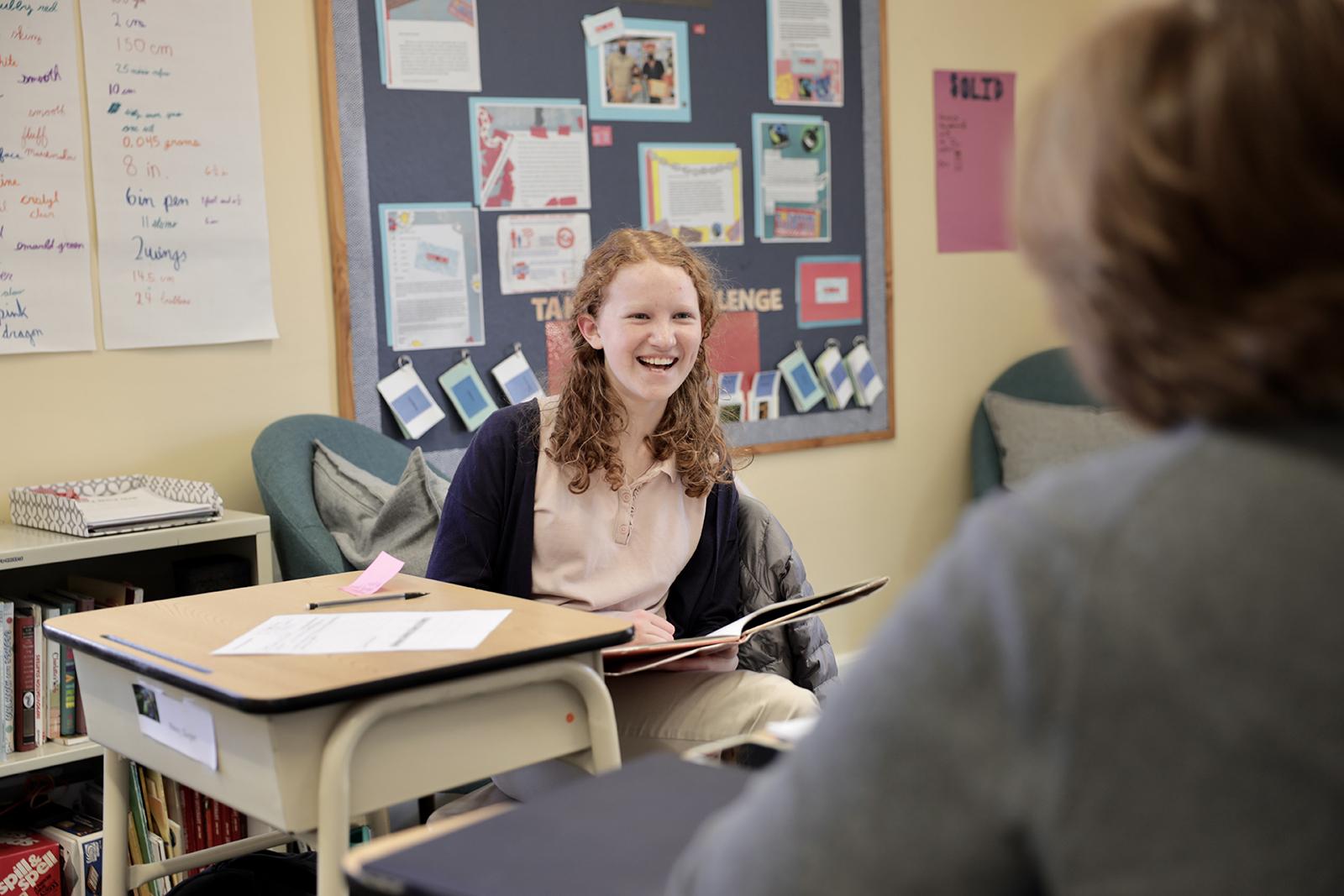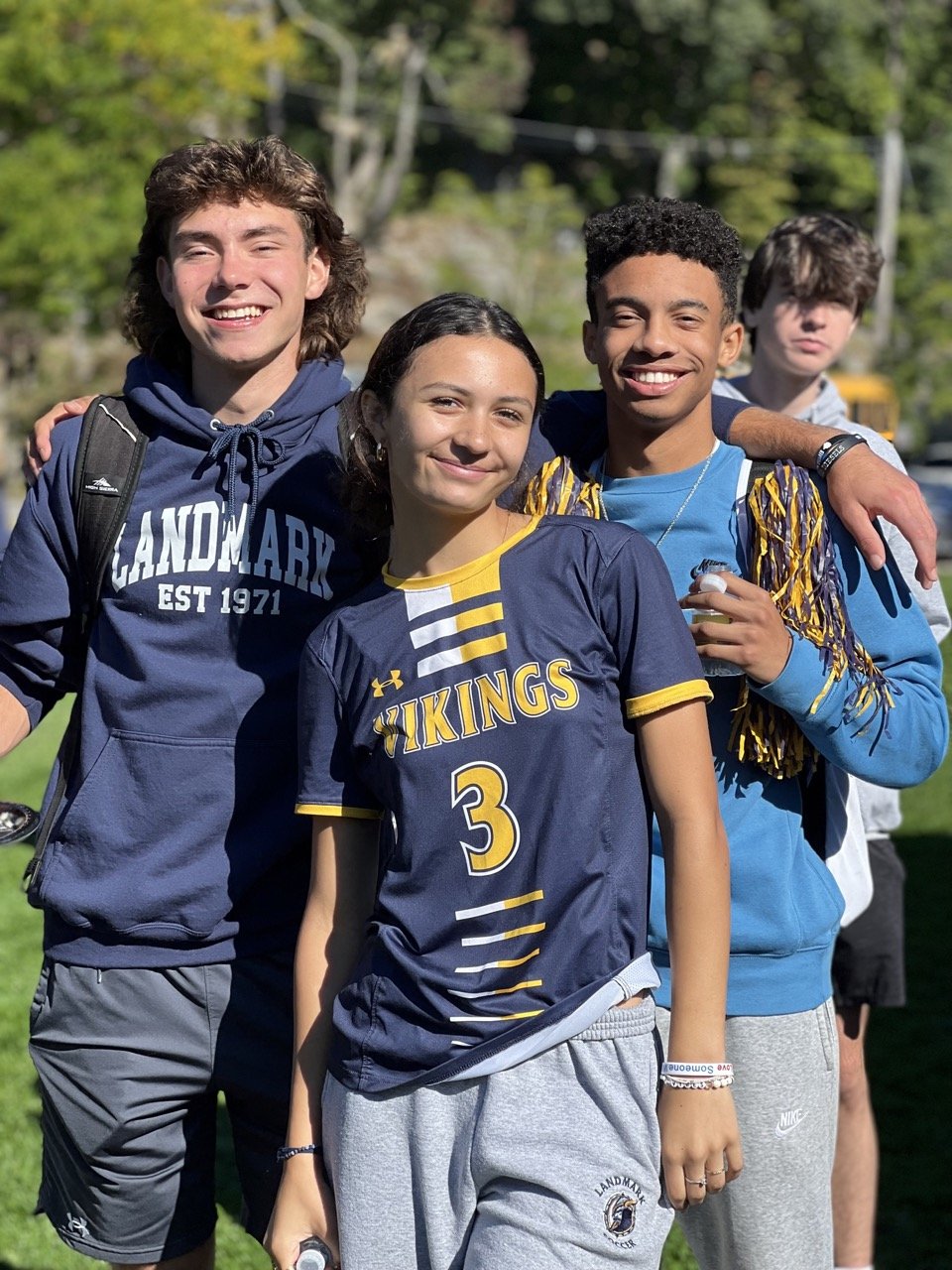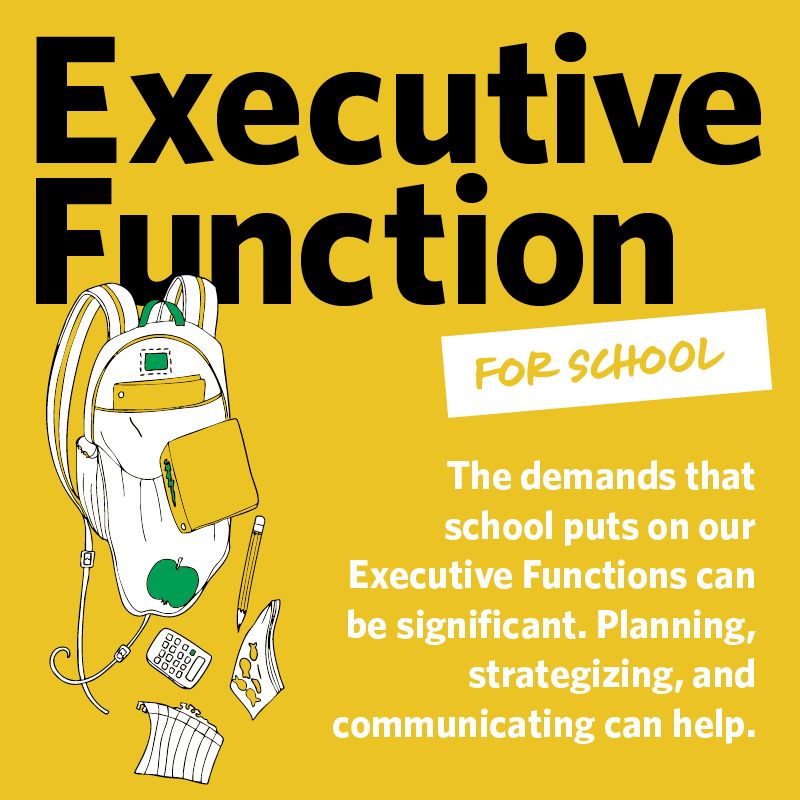- Our School
- Our Advantage
- Admission
- Elementary•Middle School
- High School
- Summer
- Giving
- Parent Resources
- For Educators
- Alumni
« Back
Executive Function For School
May 22nd, 2025
Part 2 of Executive Function: A Guidebook


It’s a school night, and your child sits at the kitchen table surrounded by textbooks, a pencil in hand, and a blank worksheet staring back at them. “I don’t even know where to start,” they say, frustrated. Sound familiar? Moments like these often bring executive function (EF) into sharp focus—not because EF only matters in school, but because school is where young people face some of their biggest challenges in planning, organizing, and managing tasks. We all have strengths and weaknesses when it comes to EF, and we rely on strategies to help us stay on track. This is more important for kids than adults, as their brains are still growing and changing. EF begins developing in infancy, but there are major growth spurts between the ages of 3 and 5 and again during adolescence. During these times, it’s critical for adults to step in and help children build the skills they’ll need to eventually manage on their own.11

EF Strategies to Help Your Child with School
When a 9-year-old forgets to hand in an assignment, we often shrug it off, gently reminding them to turn it in the next day. But as children grow older, our expectations shift. By middle or high school, we assume they’ll manage deadlines, stay organized, and juggle multiple assignments on their own. The truth is, many kids simply aren’t ready for this level of independence. As school demands increase, the support from adults often decreases, leaving some students to struggle—not because they lack intelligence, but because their EF skills are still catching up. Below are strategies you can implement at home to support EF for schoolwork.
Planner or Assignment Notebooks
If your school doesn’t provide one, get your child an assignment notebook where they can make and keep checklists of assignments, due dates, and activities. Check in with your child every day after school. Have them get out their assignments either online or in their notebook and talk through their to-dos.
Model Planning
On either a daily or weekly basis, talk through what the schedule is for the week. If you are using an assignment notebook or calendar, you can have your child add in their after-school activities. This way, if a particular evening is extra busy, talk about planning ahead. Perhaps there won’t be time to do homework that evening and the child needs to adjust when they get work done.
Set Aside Time to Get Work Done
It is helpful if this is a consistent time each day, but if it can’t be consistent, make sure it is communicated with your child so they know what to expect.
Set Aside Space to Get Work Done
A quiet space, if possible, with an adult nearby for support. Ideally, the workspace should be well-lit
and free of distractions like phones or TVs.
Create Routines
Routines help your child know what to expect, to help them get their brain in the right frame of mind. This is particularly important for older children who struggle more with task initiation.
Estimate Time
Help your child estimate how long it might take to complete tasks. Then have your child reflect on how long the task actually took. This helps them build time awareness.
Micro Unit
If your child gets overwhelmed by homework or projects, help them break the assignment down into smaller parts. Get started with a small step that is easy to complete. This builds confidence and helps with task initiation.
Rewards
Let your child pick rewards for completing steps. The size of the reward should match the size of the step. If it is a short step that takes a few minutes, perhaps it is just a bite of a snack. If it is a longer step that has taken them most of their homework time, perhaps it is some screen time or something else they enjoy. 12
Tell Your Child Why
Especially as your child gets older, it is important that they understand WHY these strategies are being used. This will help them
decide how and what strategies to implement on their own as they gain independence.
Change It Up
If a strategy isn’t working, try something different! Talk to your child about why it isn’t working and brainstorm ideas together. Involving them in the process gives them more agency and demonstrates the need for flexibility.
Download templates for these strategies.

Questions to Ask Your Child’s Teacher
Below are questions you can ask your child or child’s teacher. It is better to do this early in the school year. If you already have concerns about your child’s EF, be specific with the teacher, working to build collaboration. As your child gets older, if they don’t already know the answers to these questions, encourage them to advocate by reaching out to the teacher for answers.
(Tip: you could help your child compose an email to their teacher.)
- How do students know what their homework is and when it is due?
- Do you expect your students to track their assignments in a planner or online?
- What strategies do you use to help students stay organized with materials?
- If students are doing a longer-term project, like a book report, are there due dates along the way?
- If my child is struggling with a concept, what options are available to them for extra help?
- What is the best way for my child to communicate their needs with you?
- Are there any visual cues or reminders you use to support student focus and time management?
- Have you noticed any specific challenges with my child initiating tasks or completing tasks independently?

What is Metacognition and How Does it Work?
“Metacognitive thinking teaches us about ourselves,” says Tamara Rosier, a learning coach who specializes in metacognitive techniques. “Thinking about our thinking creates perspective — perspective that leaves room for change.” She gives an example: “Instead of saying, ‘Math tests make me anxious,’ we’re asking ourselves, ‘What is it about math tests that makes me feel anxious and what can I do to change that?’ ” Kids [and adults] who are taught to think of themselves as being “good” or “bad” at a particular task can have a fixed mindset that makes them passive in approaching a challenge: either they can do it or they can’t, but they aren’t likely to think they can change that outcome. Teaching someone to become more self-reflective helps them move from a mindset that leaves little room for change to a mindset which promotes self-awareness and resilience.13
Citations
11. What Is Executive Function? And How Does It Relate to Child Development?
12. Helping Kids Who Struggle With Executive Functions
13. Jacobson, R. (2024, February 5). Metacognition: How thinking about thinking can help kids. Child Mind Institute.
The Executive Function Guidebook was compiled by representatives from Landmark School, empowering students with reading challenges, and Landmark Outreach, PD and coaching for educators.
Executive Function: A Guidebook Blog Series
Click on each of the images below to see that blog article. Or download the entire guidebook using the form.
Download Executive Function: A Guidebook
Executive Function Guidebook
Fill out the form to see the Executive Function Guidebook as a flipbook or download the entire guidebook.


Dyslexia: A Guidebook
Check out Landmark's other Guidebook blog series on Dyslexia.

Reading: A Guidebook
Check out Landmark's other Guidebook blog series on Reading.
Posted in the category Learning.








.jpg?v=1652115432307)














